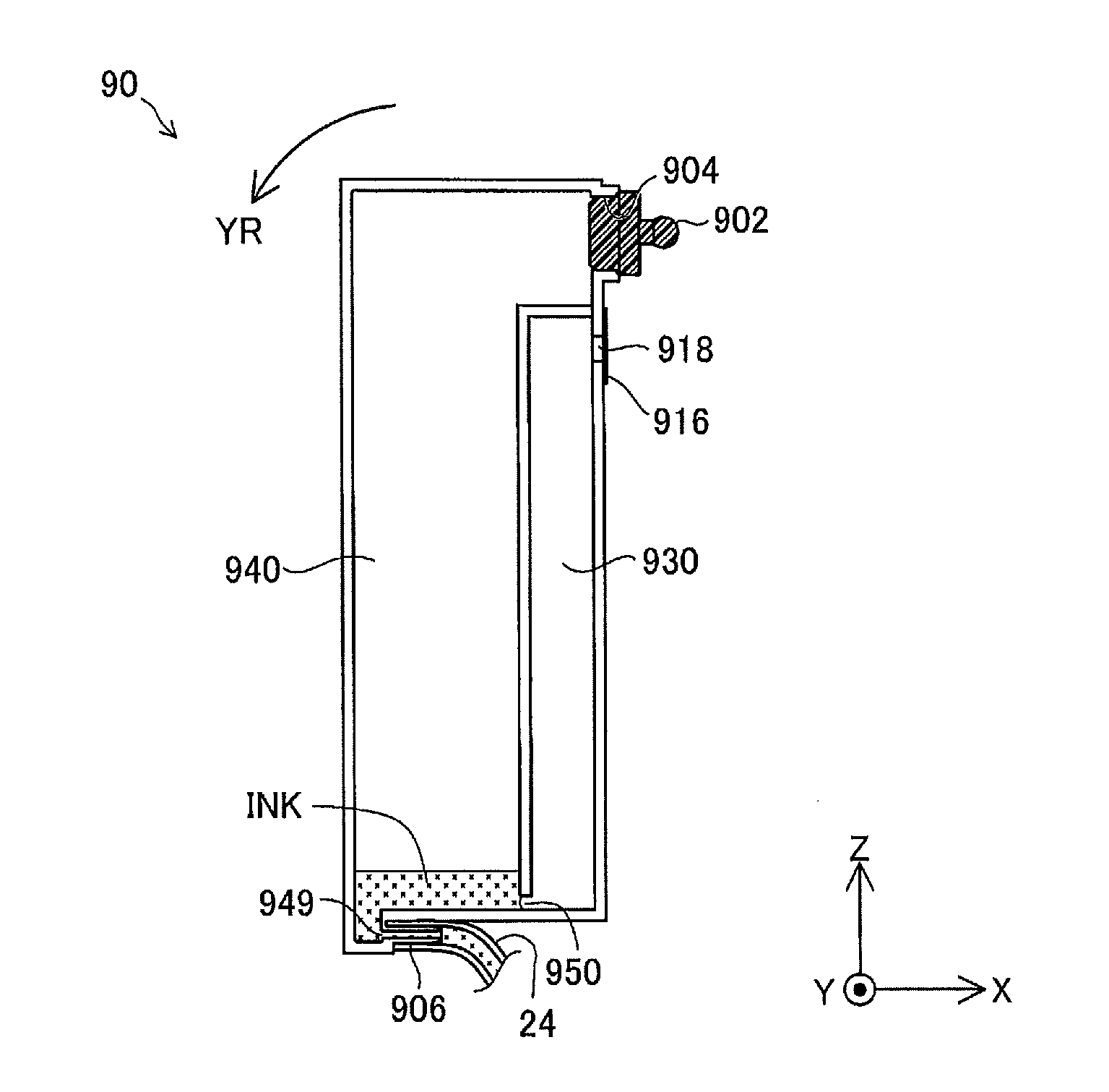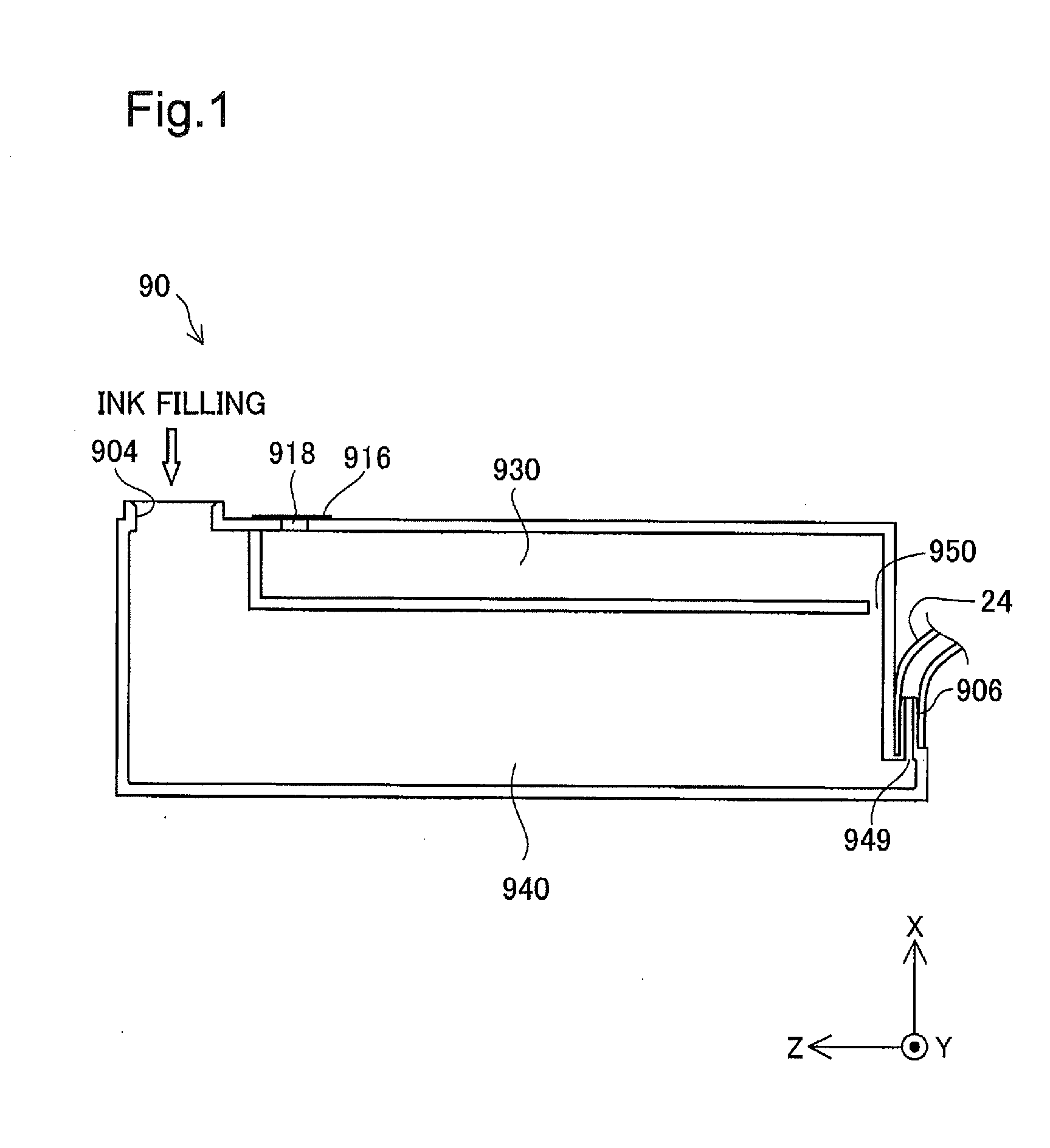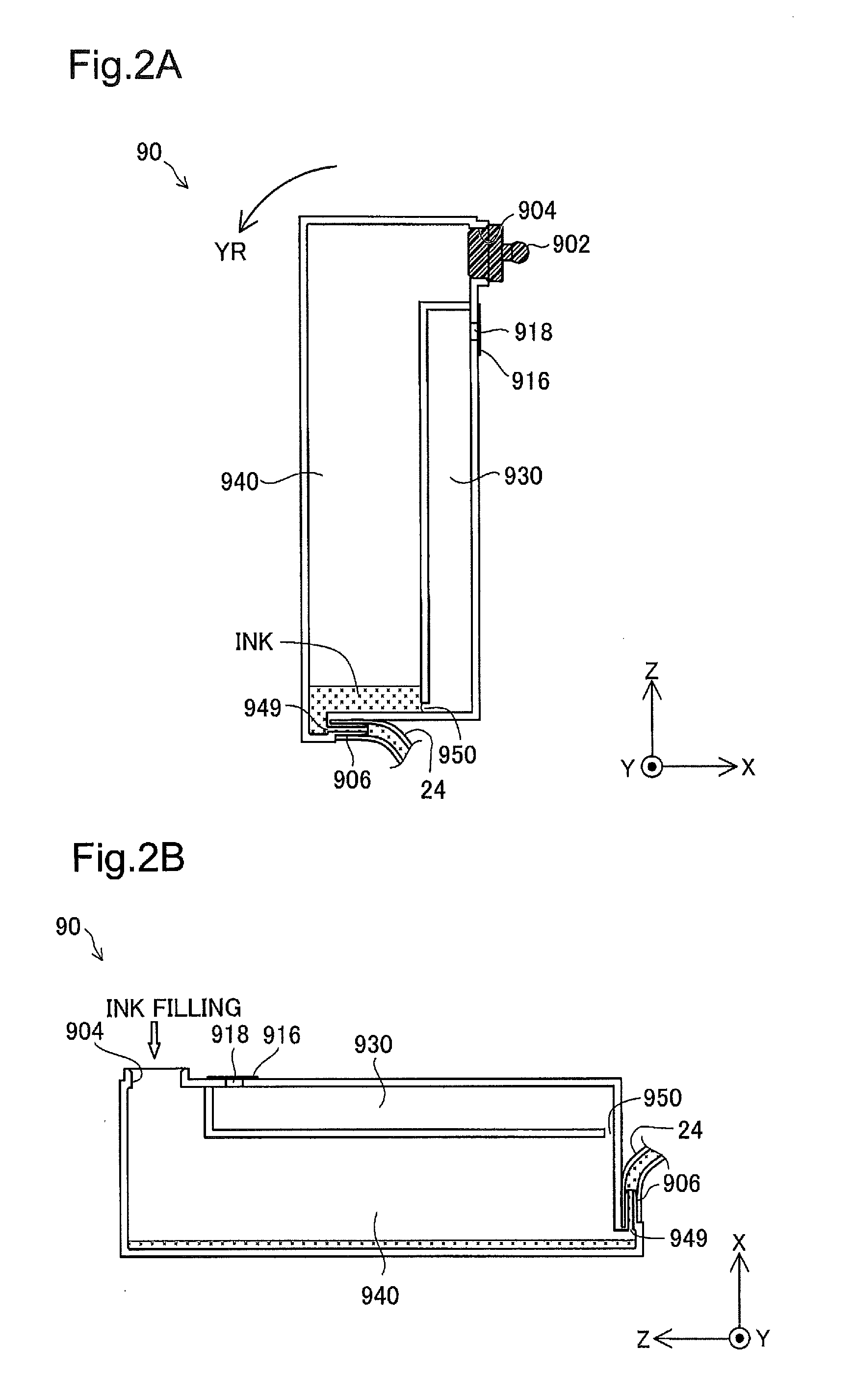Liquid container and liquid ejection system
a liquid ejection system and liquid container technology, applied in printing and other directions, can solve the problems of affecting the original function affecting the ejection effect of the sheet member, and not preventing the leakage of ink, so as to reduce the probability of leakage and lower the air permeability of the sheet member
- Summary
- Abstract
- Description
- Claims
- Application Information
AI Technical Summary
Benefits of technology
Problems solved by technology
Method used
Image
Examples
first embodiment
B-1. First Embodiment
B-1-1. Structure of Liquid Ejection System
[0162]FIGS. 3A and 3B are explanatory diagrams showing a liquid ejection system 1 according to a first embodiment. FIG. 3A is a perspective view showing the appearance of the liquid ejection system 1. FIG. 3B is a perspective view showing the appearance of the liquid ejection system 1 with liquid containers 30 according to the first embodiment.
[0163]Referring to FIG. 3A, the liquid ejection system 1 includes an inkjet printer 12 (also called “printer 12”) as a liquid ejection apparatus and a tank unit 50. The printer 12 includes a sheet feed assembly 13, a sheet discharge assembly 14, a carriage 16 and four sub-tanks 20. The four sub-tanks 20 respectively store different color inks. More specifically, the four sub-tanks 20 include a sub-tank 20Bk for storing black ink, sub-tank 20Cn for storing cyan ink, a sub-tank 20Ma for storing magenta ink and a sub-tank 20Yw for storing yellow ink. The four sub-tanks 20 are mounted ...
second embodiment
B-2. Second Embodiment
[0216]FIGS. 14A and 14B are explanatory diagrams showing an ink tank 30a according to a second embodiment. FIGS. 14A and 14B are the view corresponding to FIG. 11A of the first embodiment. FIG. 14A illustrates the structure of the ink tank 30a of the second embodiment. FIG. 14B illustrates the state of the ink tank 30a when an excess amount of ink is filled. The differences from the ink tank 30 of the first embodiment are the structure of a liquid chamber 340a and the height of a liquid inlet 304a in the filling attitude. Otherwise the structures of the second embodiment are similar to those of the first embodiment and are thus expressed by the like numerals and symbols and are not specifically described here. Like the ink tank 30 of the first embodiment, the ink tank 30a of the second embodiment is used for the liquid ejection system 1 (FIGS. 3A and 3B). For the better understanding, a plug member 302 is shown by the broken line in FIG. 14A.
[0217]As shown in F...
third embodiment
B-3. Third Embodiment
[0223]FIG. 16 is an explanatory diagram showing an ink tank 30b according to a third embodiment. FIG. 16 is the view corresponding to FIGS. 11A and 14A of the above embodiments. The differences from the first embodiment are the structure of a connection path 350b and the structure of a liquid retainer 345b. Otherwise the structures of the third embodiment are similar to those of the first embodiment and are thus expressed by the like numerals and symbols and are not specifically described here.
[0224]The ink tank 30b of the third embodiment has the connection path 350b provided in the form of an aperture instead of the elongated flow path. The connection path 350b has an opening area sufficient to form the meniscus. Additionally, a porous member 345b is provided to close one end 349 in the liquid chamber 340. This porous member 345 serves as the liquid retainer to retain a certain amount of ink. The porous member 345b forms an inner through-path to enable ink in ...
PUM
 Login to View More
Login to View More Abstract
Description
Claims
Application Information
 Login to View More
Login to View More - R&D
- Intellectual Property
- Life Sciences
- Materials
- Tech Scout
- Unparalleled Data Quality
- Higher Quality Content
- 60% Fewer Hallucinations
Browse by: Latest US Patents, China's latest patents, Technical Efficacy Thesaurus, Application Domain, Technology Topic, Popular Technical Reports.
© 2025 PatSnap. All rights reserved.Legal|Privacy policy|Modern Slavery Act Transparency Statement|Sitemap|About US| Contact US: help@patsnap.com



